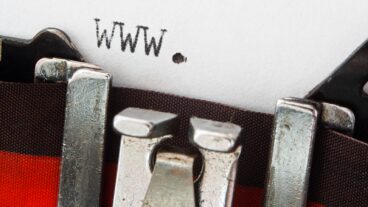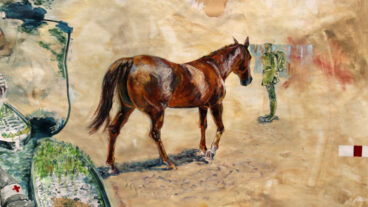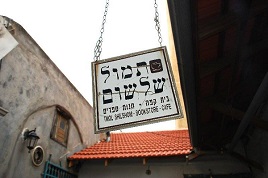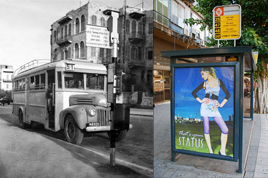It was 67 years ago that the British Government completed its withdrawal from Mandatory Palestine — now the State of Israel — handing over control of the Port of Haifa on June 30, 1948. As reported by the Associated Press, “Israel’s Star of David banner replaced the Union Jack over Haifa harbor tonight as the last of British troops pulled out of Palestine.
“Britain’s 31 years of military power in the strategic Middle East land ended quietly, in contrast to the years of intermittent violence that swept the Holy Land when Arabs, then Jews revolted and finally fought each other”.
“At the flag raising, David Ben-Gurion, Israel’s premier, described the evacuation as ‘one of the greatest days in the state of Israel’s history.'”
“‘We are prepared to forget this shameful British chapter in the history of Palestine if they will stop war against us,’ he continued. “During the last two years they have been fighting us with the White Paper (which limited Jewish immigration ) enforced by British soldiers and police, and during the last half year they have been fighting us with Arab mercenaries.'”
“The evacuation of the last 2,500 British soldiers began before dawn and was completed shortly after noon when the British flag was hauled down”.
“A United Nations truce observer, Col. Joe Hoffman of Baltimore, Md., said the UN will supervise the administration by Jewish authorities of Haifa’s port”.
“(The basic dispute between Jews and Arabs over Palestine remained. In Cairo, Fawzi Mulki Pasha, Trans-Jordan’s foreign minister, told a reporter Count Folke Bernadotte’s proposals of a permanent Palestine settlement are ‘hellish.’ Previously an Arab source said the UN mediator’s suggestions ‘imply the existence of a Jewish state which the Arabs could never accept.'”
“(King Abdullah of Trans-Jordan and King Ibn Saud of Saudi Arabia pledged themselves to use all possible means to attaining ‘complete Arab independence and control’ in Palestine.)”
The AP article, “Israel Flag Over Haifa, Last British Troops Leave Zion” can be read in the Google Archive online.
The modern Port of Haifa owed –and still owes — much to the British Empire, althought its origins stretch back millennia. According to the Port of Haifa website, “It can be supposed that even in prehistoric times seamen found refuge from storms in Haifa bay under the lee of Mount Carmel. Haifa harbor is mentioned for the first time in the year 104 BC when Ptolemy Lathyrus of Cyprus landed a huge force in Shikmona port in order to wage war on Alexander Yanai the Jewish king”.
“When the Crusaders conquered Haifa in the year 1100, the place became an important and flourishing town which also served as the main port of Tiberias, the capital of the Galilee. During the Mameluke period the place degenerated to the rank of a small and neglected village although the maritime trade continued there. In the eighteenth century Haifa had a reputation of being a pirates lair”.
“The first person to comprehend the tremendous possibilities of the town was Benjamin Zeev Herzl, the founder of political Zionism, who visited the Holy Land in 1898 and wrote a prophetic description of the future of Haifa, the important port, in his book ‘Alt-Neuland'”.
“They headed for Haifa. The coast of Palestine rose on the horizon on a spring morning following one of the mild, soft nights common in the eastern Mediterranean. They stood together on the bridge of the yacht, and stared steadily through their telescopes for ten whole minutes, looking always in the same direction.
“I could swear that that was the Bay of Acco over there,” remarked Friedrich.
“I could also swear to the contrary,” asserted Kingscourt. “I still have a picture of that Bay in my mind’s eye. It was empty and deserted twenty years ago. Still, that’s the Carmel on our right, and to our left is the town of Acco.”
“How changed it all is!” cried Friedrich. “There’s been a miracle here.”
“Trial drillings were started back in 1920. Two years later, the engineer Sir Frederick Palmer surveyed the entire coast of Palestine at the behest of the Mandate Authorities and confirmed that Haifa was the most suitable site for a deep water port. The port was officially opened on the 31st of October 1933. The rapid growth in the population of Haifa, which in 1936 numbered about one hundred thousand inhabitants, was of course, directly linked to the construction of the new Haifa port”.
“Haifa port has a glorious part in the history of the revival of the people of Israel by serving as the gateway for hundreds of thousands of illegal immigrants and immigrants who arrived by sea during the period prior to and after the State came into being”.
New immigrants entered through Gate number five which served for years as the main entrance into the Port and was later named Palmer Gate for Sir Frederick Palmer. The road leading out from the gate is also called Palmer Gate. The Gate was commemorated with a stamp by the Israel Postal Service in 2014.
“The Second World War slowed the development of the port somewhat, but the end of the Mandate in 1948 and the establishment of the State gave a strong push to its growth once again. The War of Liberation and the sealing of the overland borders with Arab countries made Haifa the country’s vital gateway to the entire world”.
And so it is.
It was 67 years ago that the British Government completed its withdrawal from Mandatory Palestine — now the State of Israel — handing over control of the Port of Haifa on June 30, 1948. As reported by the Associated Press, “Israel’s Star of David banner replaced the Union Jack over Haifa harbor tonight as the last of British troops pulled out of Palestine.
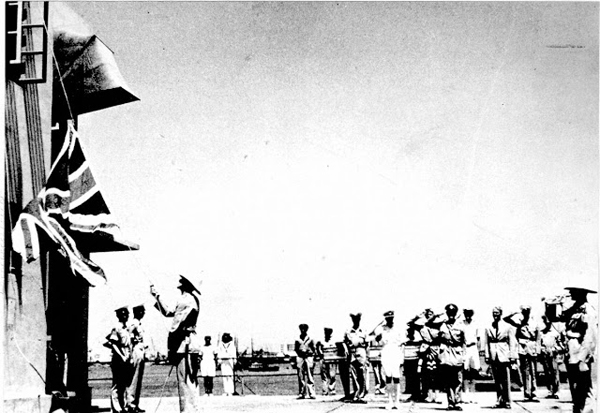
“Britain’s 31 years of military power in the strategic Middle East land ended quietly, in contrast to the years of intermittent violence that swept the Holy Land when Arabs, then Jews revolted and finally fought each other”.
“At the flag raising, David Ben-Gurion, Israel’s premier, described the evacuation as ‘one of the greatest days in the state of Israel’s history.'”
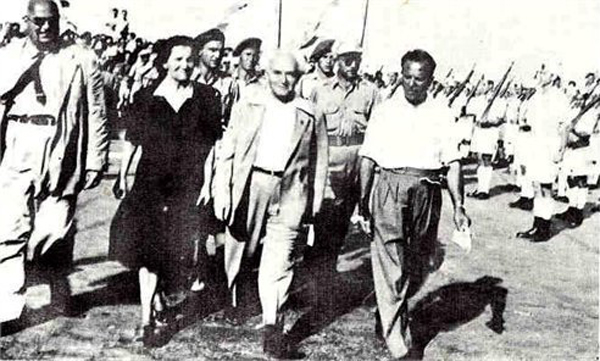
“‘We are prepared to forget this shameful British chapter in the history of Palestine if they will stop war against us,’ he continued. “During the last two years they have been fighting us with the White Paper (which limited Jewish immigration ) enforced by British soldiers and police, and during the last half year they have been fighting us with Arab mercenaries.'”
“The evacuation of the last 2,500 British soldiers began before dawn and was completed shortly after noon when the British flag was hauled down”.
“A United Nations truce observer, Col. Joe Hoffman of Baltimore, Md., said the UN will supervise the administration by Jewish authorities of Haifa’s port”.
“(The basic dispute between Jews and Arabs over Palestine remained. In Cairo, Fawzi Mulki Pasha, Trans-Jordan’s foreign minister, told a reporter Count Folke Bernadotte’s proposals of a permanent Palestine settlement are ‘hellish.’ Previously an Arab source said the UN mediator’s suggestions ‘imply the existence of a Jewish state which the Arabs could never accept.'”
“(King Abdullah of Trans-Jordan and King Ibn Saud of Saudi Arabia pledged themselves to use all possible means to attaining ‘complete Arab independence and control’ in Palestine.)”
The AP article, “Israel Flag Over Haifa, Last British Troops Leave Zion” can be read in the Google Archive online.
The modern Port of Haifa owed –and still owes — much to the British Empire, althought its origins stretch back millennia. According to the Port of Haifa website, “It can be supposed that even in prehistoric times seamen found refuge from storms in Haifa bay under the lee of Mount Carmel. Haifa harbor is mentioned for the first time in the year 104 BC when Ptolemy Lathyrus of Cyprus landed a huge force in Shikmona port in order to wage war on Alexander Yanai the Jewish king”.
“When the Crusaders conquered Haifa in the year 1100, the place became an important and flourishing town which also served as the main port of Tiberias, the capital of the Galilee. During the Mameluke period the place degenerated to the rank of a small and neglected village although the maritime trade continued there. In the eighteenth century Haifa had a reputation of being a pirates lair”.
“The first person to comprehend the tremendous possibilities of the town was Benjamin Zeev Herzl, the founder of political Zionism, who visited the Holy Land in 1898 and wrote a prophetic description of the future of Haifa, the important port, in his book ‘Alt-Neuland'”.
“Trial drillings were started back in 1920. Two years later, the engineer Sir Frederick Palmer surveyed the entire coast of Palestine at the behest of the Mandate Authorities and confirmed that Haifa was the most suitable site for a deep water port. The port was officially opened on the 31st of October 1933. The rapid growth in the population of Haifa, which in 1936 numbered about one hundred thousand inhabitants, was of course, directly linked to the construction of the new Haifa port”.
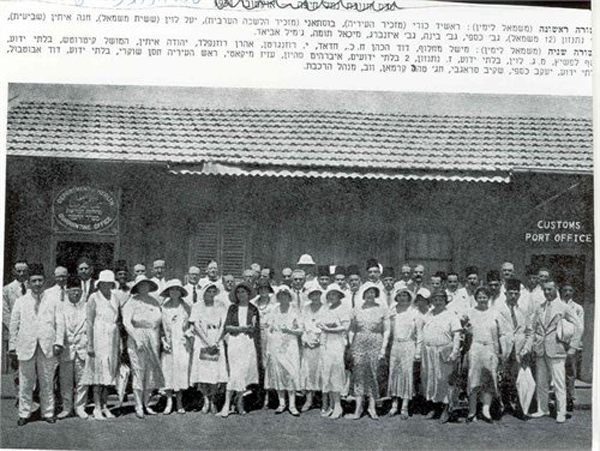
“Haifa port has a glorious part in the history of the revival of the people of Israel by serving as the gateway for hundreds of thousands of illegal immigrants and immigrants who arrived by sea during the period prior to and after the State came into being”.
New immigrants entered through Gate number five which served for years as the main entrance into the Port and was later named Palmer Gate for Sir Frederick Palmer. The road leading out from the gate is also called Palmer Gate. The Gate was commemorated with a stamp by the Israel Postal Service in 2014.
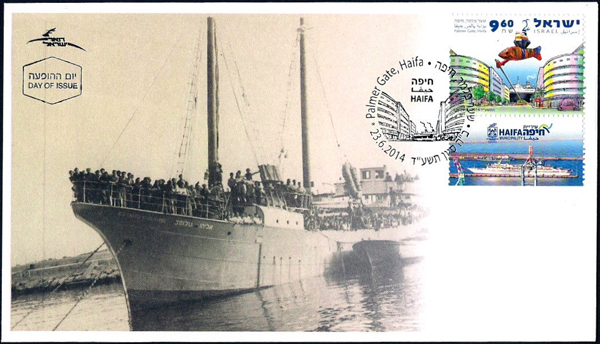
“The Second World War slowed the development of the port somewhat, but the end of the Mandate in 1948 and the establishment of the State gave a strong push to its growth once again. The War of Liberation and the sealing of the overland borders with Arab countries made Haifa the country’s vital gateway to the entire world”.
And so it is.







